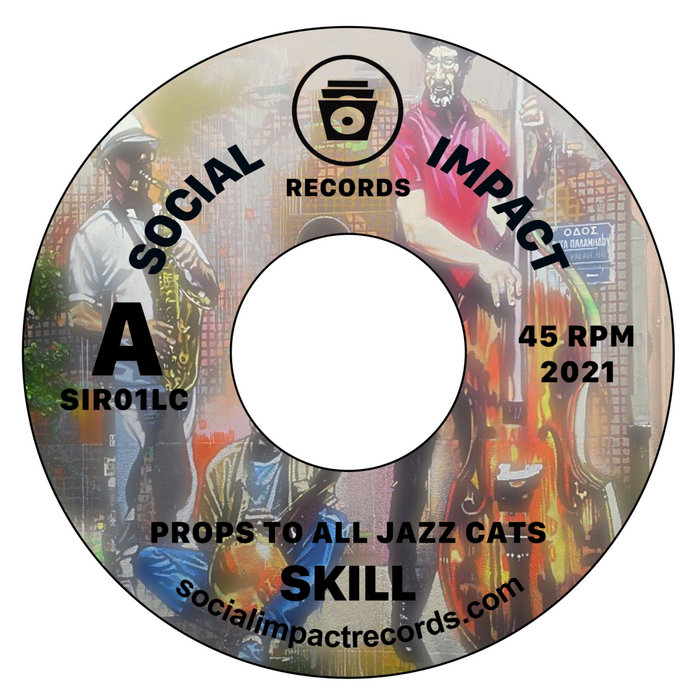
Props To All Jazz Cats / Yes, Yes, Y’all – Social Impact Records
this blog is GROOVY – check out great Soul, Funk, Jazz, Hip Hop, Bass, Breaks , Reggae, House n many more TUNES
Boom bap. Just hearing that phrase makes you want to nod your head and tap your feet. This hip-hop subgenre, characterized by its hard-hitting beats and clever lyricism, has a rich history that’s as vibrant as the vinyl it’s often pressed on. Let’s take a laid-back stroll through the evolution of boom bap music, sprinkle in some quirky stories about the artists who rocked this scene, and celebrate those sweet grooves.
To understand boom bap’s genesis, we gotta rewind back to the 1980s in New York City—a melting pot of cultures and musical influences. Hip-hop was still in its infancy but quickly gaining traction with DJs like Kool Herc throwing block parties that turned into epic gatherings. These gatherings were all about spinning records with heavy breaks from funk and soul tracks while MCs rapped over them.
The term “boom bap” itself refers to the sound created by drum machines—particularly the iconic Roland TR-808—that produced deep bass (the “boom”) paired with sharp snares or claps (the “bap”). Producers like DJ Premier and Pete Rock emerged during this era, crafting distinctive beats that would define the genre. With their sampling chops honed from digging through crates at local record shops, they brought life to dusty old vinyl records.
The golden age of hip-hop spanned from approximately 1986 to 1995 when classic albums rolled out like candy from a piñata:
“Paid In Full” by Eric B. & Rakim (1987) – This album paved the way for intricate lyricism paired with those signature boom bap beats.
“Mecca And The Soul Brother” by Pete Rock & CL Smooth (1992) – Known for smooth flows backed by jazz-infused samples; it’s a testament to how chill yet impactful boom bap can be.
“Illmatic” by Nas (1994) – Widely hailed as one of hip-hop’s greatest albums; it was dripping with lyrical genius over perfectly crafted production.
These cornerstone albums solidified boom bap not just as music but as an art form worthy of deep appreciation.
As we vibe along this history lesson, let’s kick it up a notch with some quirky tales about these legendary musicians:
Did you know Nas once revealed he had no clue what “meeting his idol” felt like? When he met Marley Marl, he fumbled his words so much that he joked it felt like being handed monopoly money instead! Talk about breaking down starstruck!
DJ Premier is known for meticulously cutting samples in his tracks—the man could slice through any beat! However, there’s an amusing tidbit: He once accidentally sampled a commercial jingle because he liked how funky it sounded… Let’s just say that one didn’t make it onto any major releases!
MF DOOM wore many masks—literally! But here’s something funny: He wasn’t big on etiquette when it came down to performing live shows… sometimes he’d send random singers instead! Imagine showing up at a concert only to see someone else rocking DOOM’s famous metal mask—it’d throw off more than just one crowd!
As we skrrt into today’s music landscape, it’s important to note how much impact boom bap still has on modern artists across genres—from Kendrick Lamar bringing back those gritty vibes in “HUMBLE.”to J. Cole channeling classic sounds throughout his discography.
Even newer artists are embracing this nostalgic style while layering their unique flavors—a true testament that real hip-hop never fades away; instead, it evolves gracefully while tipping its hat back toward vinyl roots.
So here we are—booming our way through history while laughing about those wacky moments behind-the-scenes—but always remembering why we love this genre so much.
Whether you’re flipping through stacks at your local record store or vibing out at home sessions turning up your favorite classics… keep feeling each “boom” hit harder than before—and let every snare snap remind you where you came from within this groovelicious world called BOOM BAP!
Let’s keep pushing forward together—you dig?

Props To All Jazz Cats / Yes, Yes, Y’all – Social Impact Records